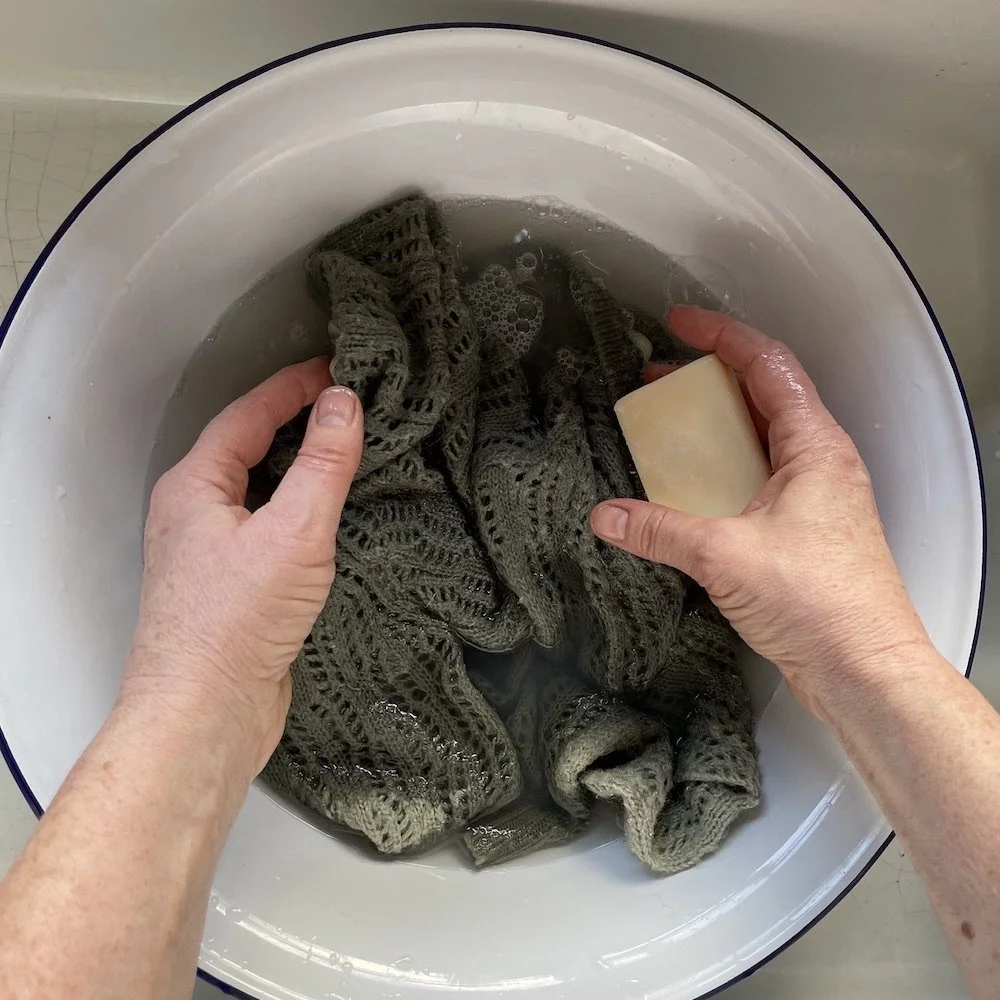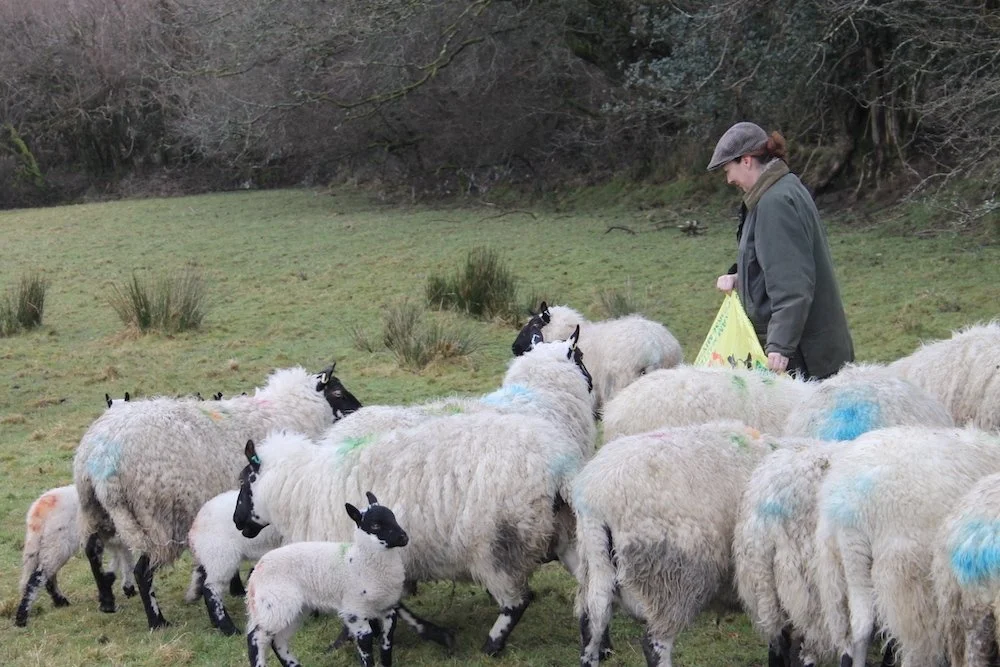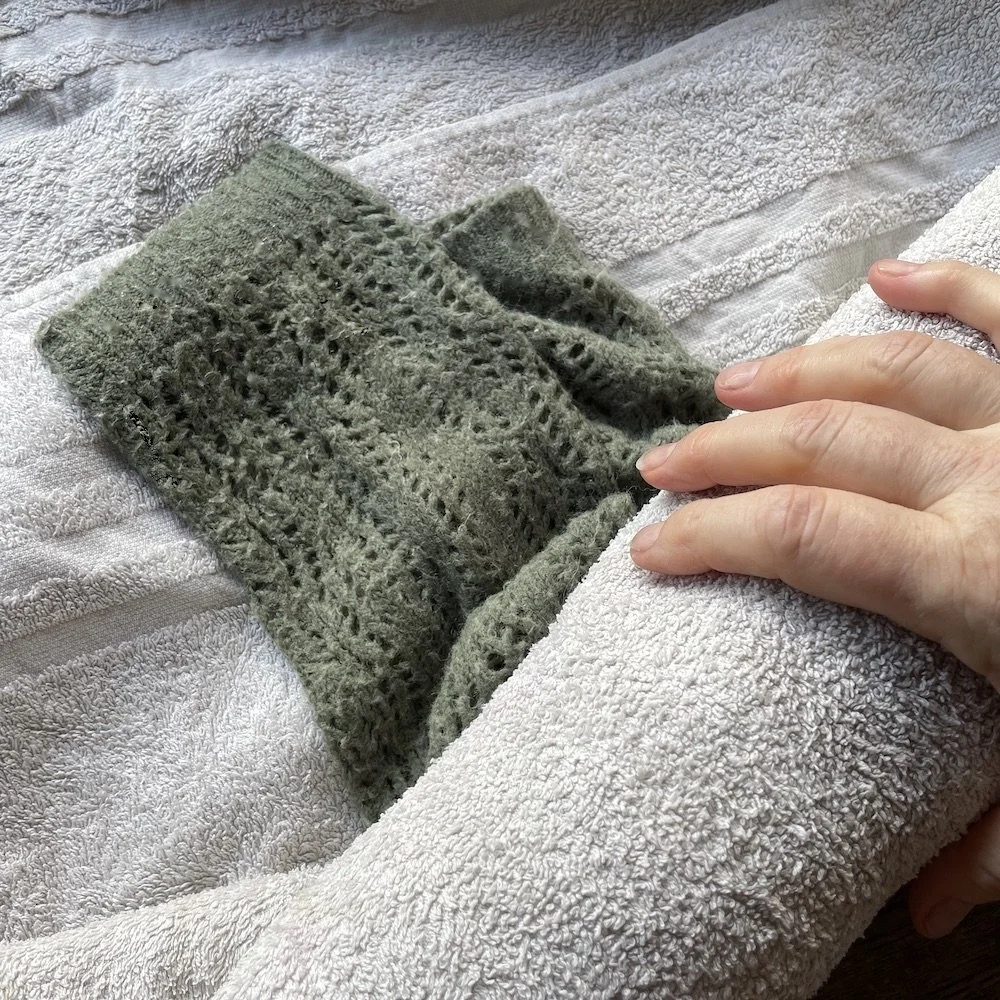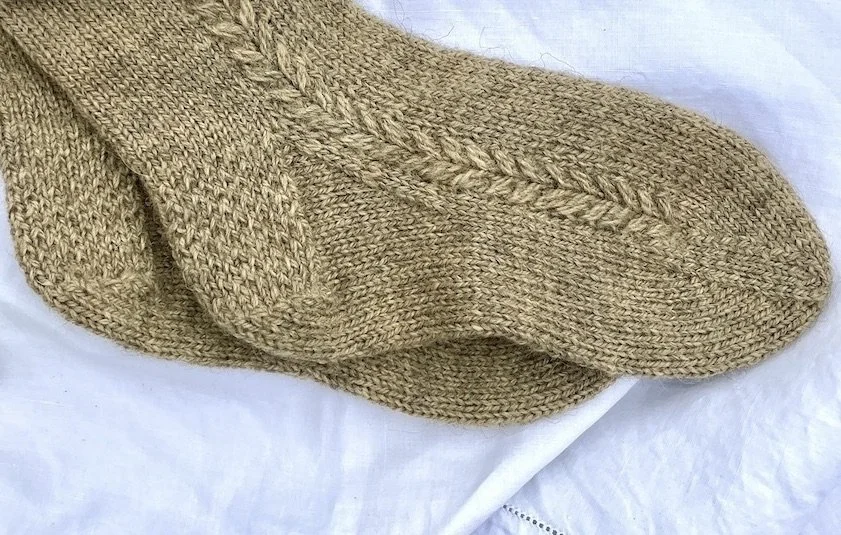The Mindful Art of Caring
Caring for your woolly knits
Caring is a conscious decision, and by definition it is both a feeling of love, and an act of exhibiting empathy or concern; a choice that cannot be carried out half heartedly. Caring for our immediate environment, as well as the wider world, is the focus of my blog today.
I want to take a moment to share my thoughts on how we can show love and care for ourselves as we take time to look after our clothes. So let’s delve a little deeper into the concept of embracing a whole-earth practice as we wash our laundry together, with a primary focus on my favourite type of cloth, wool.
When I scroll through Instagram, or flick through articles online, there is a general messaging that focuses on taking time out of the day to look after ourselves. Going for a walk in the hills where I live is a time when I can clear my head of the cobwebs that clutter my thoughts.
Sitting down with my knitting and listening to an audiobook calms me; it offers a gentle creative task to loosely concentrate on.
Tending my dye garden allows time for my eyes to see how I can look after my environment (as well as myself), as I gently move my body and take note of the plants, as well as hang out with the Robin who flutters down to steal the odd worm as I turnover the soil.
Taking time for both myself and the earth around me is part of my daily rhythm, and although your self-care will look very different to mine, it is a concept that we can all relate to so that our body, minds and hearts are looked after well.
In a world that has learned to shun longevity, and turns a blind eye to the plundering of our earth’s precious resources in order to clothe our bodies, there has been a natural shedding of knowledge over the generations about how to care for our clothes.
Children were taught to knit, sew and darn at school here in the UK until somewhere along the road the skills were deemed surplus to requirement.
I do see hope on the horizon with the younger generation seeking them out; TikTok videos on visible mending are trending, and Instagram reels about how to sew on buttons are more popular than ever.
I am also seeing more teenagers learn to knit and crochet (thank you social media!) but the care of garments can still get overlooked.
When I talk to knitters, there is often a conversation about how to look after ‘Real Wool’ (a phrase that makes me ponder). Wool that is free of processes such as super-washing and added plastics, does not need to be washed very often, but people are still put off by purchasing it either in a clothes shop, or at a wool shop, because wool is not best suited to a washing machine.
Felting and shrinking are a factor with wool, and people believe that it takes too much time and bother to look after it correctly, but the more I think about it, the more I have come to believe that spending the time washing out wool garments is not just an act of doing the laundry, it is a mindful act of self-care as well.
Washing our wool clothes allows us to connect with our wardrobe; our hands bathe it and feel it in new ways, and our eyes study it in a fresh light.
With a normal load of laundry, we pick it out of the pile and pop it in the washing machine; we don’t tend to look at each item and take note of how they are fairing. But when we pick up a sweater to wash by hand, we can see when it needs our mindful care and attention. We run our eyes over them to see if a lint remover is needed to get rid of the bobbles that have sprung up under the arms and around the back. Small holes can be noted so that we can get a needle and thread to take care of a small darn before it becomes a big issue. Buttons can be sewn back on if they are looking a bit loosey-goosey.
This attention to detail is a way of caring for ourselves. It is a way of taking time out of our day to invest in something that means a lot to us; whether it’s a hand-knitted item, or one that you purchased in a store, the time you take to look after it is an investment in caring for the whole process of that garment before it reached your wardrobe.
It is honouring the sheep that provided the wool, the shepherds that cared for them, the spinners, the dyers, the producers… This natural product that keeps us warm and dry is now cared for by you so that you can feel great when you wear it.
There is also the fact that the actual washing of wool does not take that much time at all. Once you have filled your sink with tepid water and added a ph neutral wool soap, you can plunge your socks, sweaters, hats and scarves in and just leave them there for a while.
I tend to potter off and do something else; there’s no point looking at it! Just like a washing machine, you can go about your day and return in a little while.
Drain, rinse and gently squeeze the water out (avoid rubbing the wool, or you will get felt), and then lay it on a dry towel before rolling it up like a burrito on the floor and walking on it! This allows as much water as possible to be soaked into the towel before popping your garment flat on either a drying rack, or another towel on the floor, giving it a little re-shape to make sure it dries to the correct shape. And then you just leave it to dry.
A little word on wool socks is probably needed at this point. With 100% wool socks, you don’t need to wash them every time you wear them. Wool allows your feet to breathe, and as it regulates temperature for you, your feet stay nicely warm or cool depending on your environmental needs.
You sweat less in wool, and as the fibres naturally wick the sweat away from your feet, all you need to do is air the socks out once you’ve worn them. This is where sock blockers help. Wool socks tend to be washed by hand when you feel like they need it (rather than a designated routine), and are dried on the blockers to keep the shape, or simply pegged to a washing line.
We take the time to care for so many things around us. Gardens are tended, meals are prepared, homes are looked after, and as we make the space for these things to happen, we allow them to heal our souls at the same time. Maybe it is time to start reframing how we look at our laundry? Why should it be seen as the part of our routines that gets the least attention when it's the clothes on our bodies that protect us against the full force of the environment around us?
For me, I have started to see the time I take to look after my clothes as an act of mindful self-care, my clothes are looked after in a way that will stand a longer test of time and for all the hours I’ve put in to hand knitting each garment, it’s the least I can do!
They offer me colour and warmth, and it is my joy to say ‘Thank You’ to them as I plunge them into a sink of cedar scented bubbles.





